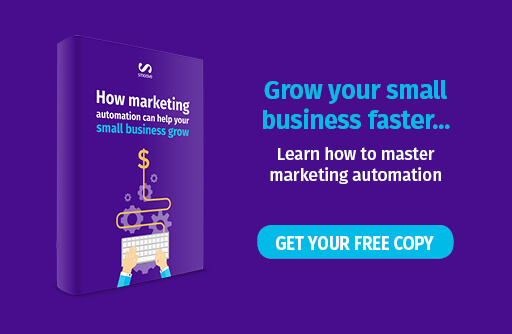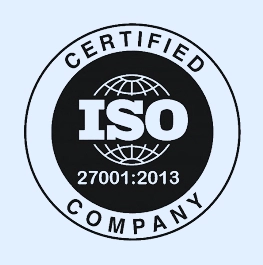As a small business owner, you probably reach out to your customers via newsletters which is great but how do you know that it’s really working? Are your sales going up? Are you driving more traffic to your site? Are offering valuable content in your newsletter, and not really getting any solid feedback?
Even though many small businesses produce and distribute newsletters on a monthly or weekly basis, business owners are often unaware of the true value of this powerful marketing tool.
A properly written and well-targeted newsletter can serve a variety of purposes, ranging from maintaining and growing a customer base, building credibility for your business, as well as boosting sales. Used correctly newsletters can be your best channel for offering new products and special promotions.
For many small business owners, selling products or services is a primary goal of an email newsletter. This is great, however to really optimise the value to your customers of your newsletter you can build on this by also offering content as well.
By including different content this gives you a chance to show your customers that you are not just a seller, but also an expert in the field and somebody who is genuinely interested in their needs.
These can be case studies or success stories directly related to your business or industry, or news related to the products or services you offer. You could also include an interview with an industry expert or summaries of your latest new blog posts. Tips and advice related to your business and industry can also go down very well. There are lot of options, knowing which one works for you can be a challenge.
To help you choose which content is best and create a winning formula for your newsletters we have put together some helpful steps:
Step One: Set up your goals and develop a strategy
A successful newsletter requires a clear strategy to achieve your goals.. It can be hard to achieve this by sending out the same email to all of your customers.
Before sending out your next newsletter, ask yourself: What is the goal of my newsletter? Is it to grow the number of my subscribers? Is it to drive more traffic to my website? Is it to sell more products? Or is it to promote an event?
After getting the answers, get your hands on planning that newsletter strategy.
Newsletter is used to inform, to communicate and even entertain, but most importantly – to sell. Its strategically written and then strategically distributed content is what will get you closer to your goals and boost your sales. In order to achieve both, you should keep in mind the following:
- Make your content interesting and informative by including different types of articles in your newsletter (special offers, product and industry insights, educative articles and so on)
- Make the content relevant for your specific goals. If your goal is to grow sales, create content then tie your product or service to it by mentioning it in the article with direct links to the items you are trying to sell)
- Collect and analyse data on your subscribers to find out more about their interests and adjust your content according to their needs
- Segment your subscribers by setting up different email lists for different newsletters for each of your goals
If you have multiple goals, setting up multiple email lists will enable you to send only relevant content to each list, or only content specifically aim at one goal.. For example, if one of those goals is to retain your current customers, you can set up an email list for those that have just purchased a product and tell them all about your after-sales care and warranties.
Lists helps you make the content relevant to specific customers and helps you maintain your subscribers list by providing more pin point value.
If you think that crafting these targeted newsletters for each group of customers will take a lot of time, there is an easy solution for this. By using newsletter templates and lists offered by services like smoove, you can easily create a different newsletter for a different target group of customers to help you achieve each of your marketing goals. These templates can be saved and used again every time you want to reach your customers..

Step Two: Focus on what content to include for each goal
Now that you have formulated your strategy the next step is to decide what content you should have to implement it.
Imagine writing a letter to a friend. Would you prefer your friend to read it from the beginning to the end or for your friend to read some of it, get bored and then throw it into the trash? Certainly not the latter!
If you really care for your customers (and we all know you do!), you will want them to find your newsletters interesting and worth reading. The secret to success is in creating compelling and useful content that your customers will like and appreciate, and also content that will help you achieve your goals more quickly.
To satisfy the needs of different groups of your customers, you will need to create different types of content to keep it relevant for them.
The first thing to do is to work out what content works best to achieve your goals.
If, for example, you own a gym and one of your goals is to increase sales of the energy drinks you sell there, you can write content in your newsletter such as “What are the best things to drink after training”’ or “Tips on dieting and exercising”. Include your products in these articles and send it to your most frequent customers as it is these customers who are most likely to be interested in this.
Another example could be that you want to drive more customers to your gym on the weekdays and want to use your existing customer base to get the word out. To do this, your newsletter content could include “Bring a friend” loyalty vouchers which are to be used during special events or classes that happen only on weekdays. You could send this newsletter out to all of your customers or maybe to the top 50 percent of customers that frequent your gym as these are most likely to be your brand ambassadors.
If you want to promote a new instructor, or new group classes, then you can create a list of people who fit that demographic the best. If you don’t know this then start with attendees of similar classes. Then send them content containing customer reviews or interviews with people from the industry about the class that is being taught. Ask the personal trainer holding the classes to write content talking about the benefits of group training. Link the articles with a special offer for you may have and you will be another step ahead in getting the most from your newsletter.
By following this method you can add greater value to your services and make new connections with possible business partners (such as industry experts) which can help you grow your business and provide your customers with greater value and appreciation for what you offer.
If you always get the same questions from your customers such as ‘when should I replace my road bike tires?’ or ‘how do I secure my bike from theft?’, you can turn the usual Q&A section into an article such as ‘The things you should know when buying a new bicycle’ with links to your best selling tires, bike locks and other related items. Experienced marketers use this little trick to save valuable time spent on answering the same questions all over again, but also to promote their products and services.
With this in mind, here are some examples of other content you could include in your newsletter to help achieve your goals:
- New products and services
- Special offers such as discounts, contests and loyalty vouchers
- Product news and industry insights
- Interesting and educative content (‘How to’ or ‘Did you know’ articles, tips and advices)
- Events and Projects you participate in
- Interviews with people from industry and satisfied customer reviews
Don’t forget to pay close attention to the structure of your newsletter by making sure it follows the same format each week. This way customers will find your newsletter easy to read and quickly find what they want.
Put the most attractive offer or most interesting article at the top of your newsletter and make sure your headlines are short, catchy and engaging.
Your Call-To-Action (CTA) buttons such as ‘Get you offer’ or ‘Find out more’ also need to be clearly visible so users can easily spot and click on them. If your newsletter has CTAs try to make one of them to stand out and put in at the top of your newsletter.
Step Three: Track and improve the user’s experience
Now that you have created your goals and strategy, and chosen the type of content you need to achieve this, your next step is to track your newsletters impact and performance. As a backbone of every content marketing campaign, metrics help you increase your chances of success by helping you focus your efforts on what works best.
Online marketing platforms such as smoove provide a number of email tracking tools which can help you to easily track the numbers of newsletters that were sent, opened and even which articles were clicked on most (what marketers call CTR or click through rate). You can even get separate lists of people for each of these metrics. CTR is the percentage of email recipients who clicked on one or more links in your newsletter, and gives you a direct insight into the number of subscribers engaging with your content. If you know what people are clicking on, you can improve your newsletter for the next time you send it, by writing more about what your customers click on (desire). You can also remove content people don’t click on (not desire). This keeps the newsletter as valuable as possible.
Fundamentally you need tracking to make sure the content you are creating in your newsletter is helping you reach your goals and helps achieve your strategy. If it doesn’t then simply choose another type of content or change your customer list.
Tools like smoove can also provide you with many of your tracking needs such as the email open rate,, and click through rate, so you can make all the changes you need to keep your newsletter strategy on track and achieve your goals fast..
Wrap-up
“While email marketing has an unfortunate reputation for being a cheap marketing channel, lots of brands have wisely decided that they want to maximize their returns from this high-ROI channel by investing heavily in their teams and tools.” – Chad White, author of Email Marketing Rules and Research Director at Litmus
A well-written and targeted newsletter is one of the best marketing tools for any small businesses. Along with staying in touch with your subscribers on a regular basis, newsletters can help you to boost your sales and build credibility for your business.
To start your using your newsletters for your business, first create the strategy, then choose and create the right content to achieve that strategy. Segmenting your subscribers into lists can help your content be more relevant, and allow you to be more specific in your goals so you can create lots of different newsletters to achieve many different goals. Finally you can then track the success and optimise your content accordingly.
With its easy-to-use system, smoove enables you to do all of this to help you make all of your newsletters a great success.
Start your newsletter today by thinking about what strategy you want for your business.


